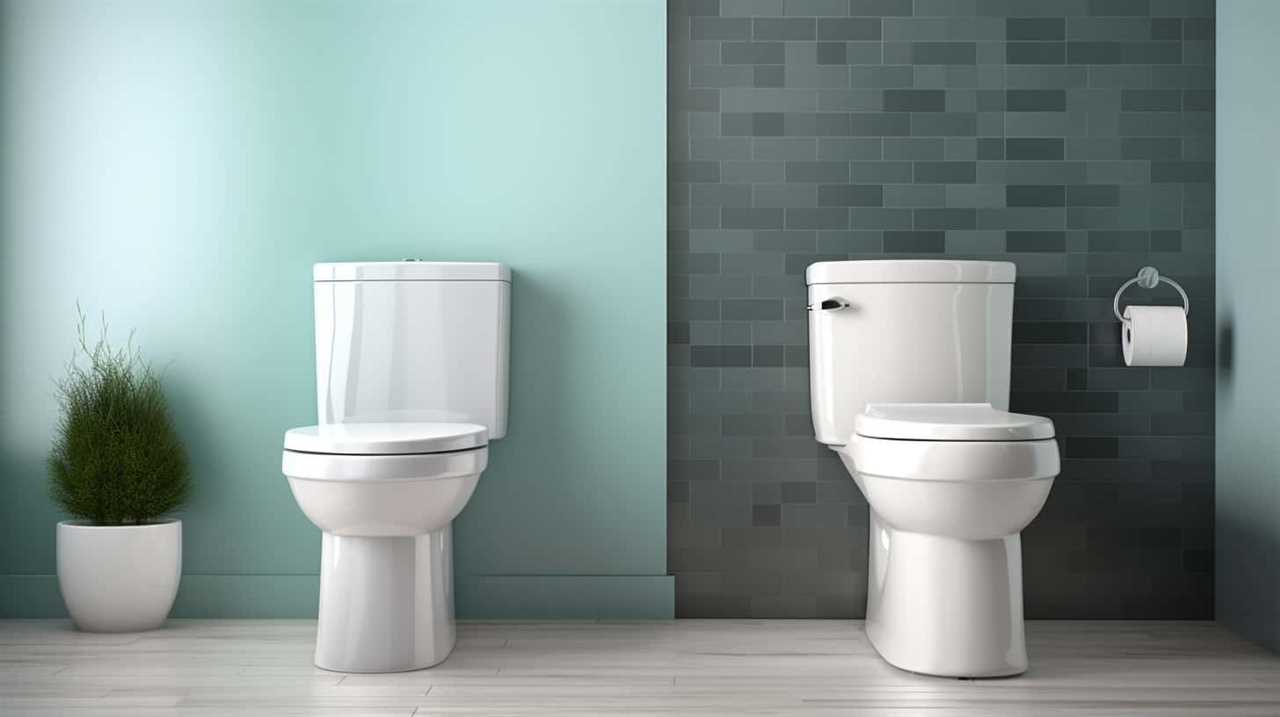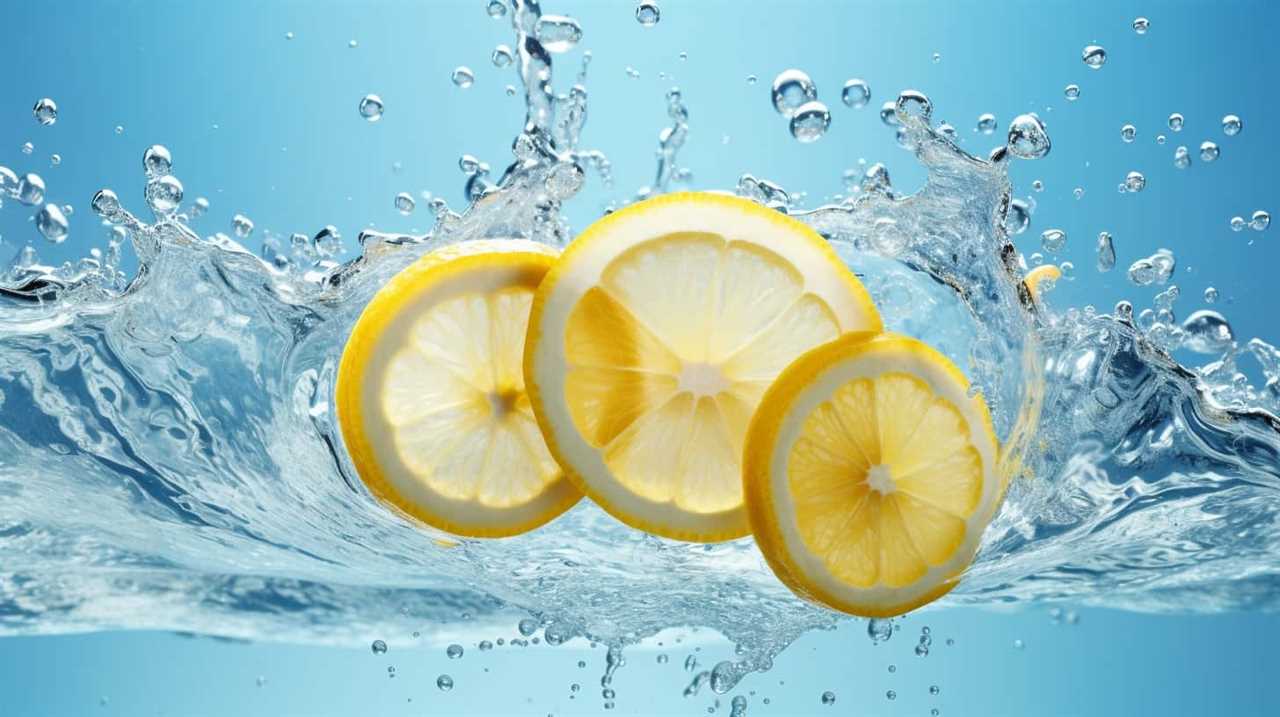Are you tired of the never-ending battle with your toilet? Well, fear not, dear readers, for we have the answer to your flushing woes. In this article, we will delve into the fascinating world of water efficiency and explore just how much water you need in your toilet to achieve the perfect flush.
Armed with our technical expertise and precise knowledge, we will equip you with the tools to reduce water consumption without sacrificing performance. So, let’s dive in and master the art of the efficient flush!
Key Takeaways
- Dual-flush toilets and low-flow mechanisms are important for water efficiency in households.
- The design and functionality of toilet flush mechanisms impact flush efficiency.
- Water pressure plays a crucial role in flush efficiency, with higher water pressure resulting in a more thorough flush.
- Modern toilets operate with lower water levels, typically ranging from 1.28 to 1.6 gallons per flush (GPF), and some high-efficiency toilets can flush effectively with as little as 0.8 GPF.
The Importance of Water Efficiency
Toilet flushes are a vital component in maintaining water efficiency within our household. With the advancement of water-saving technologies, it’s crucial for us to understand the importance of conserving water and the environmental impact it has. By optimizing our toilet flushes, we can significantly reduce water consumption and contribute to a sustainable future.
Water-saving technologies, such as dual-flush toilets and low-flow mechanisms, use less water per flush without compromising their effectiveness. These innovative solutions not only help us save water but also minimize the strain on our water resources and reduce the energy required for water treatment.
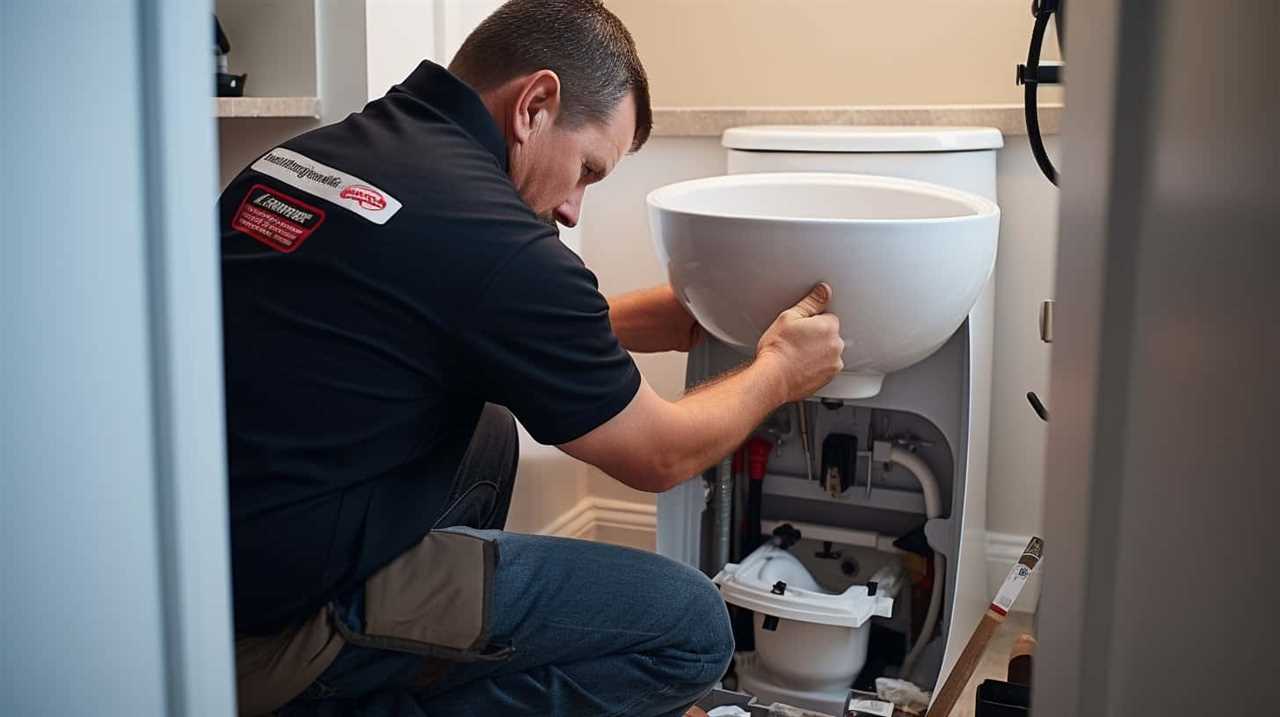
Factors Affecting Flush Efficiency
When considering the efficiency of toilet flushes, it’s important to take into account various factors that can impact their effectiveness.
One key factor is the design and functionality of the toilet flush mechanisms. Different types of mechanisms, such as gravity flush and pressure-assisted flush, have varying levels of efficiency in removing waste and clearing the bowl.
Additionally, the impact of water pressure on flush efficiency can’t be overlooked. Higher water pressure can result in a more forceful and thorough flush, ensuring that waste is effectively removed from the bowl. On the other hand, low water pressure may lead to incomplete flushing, leaving behind residue and requiring multiple flushes.
Therefore, understanding the type of flush mechanism and ensuring adequate water pressure are crucial in optimizing flush efficiency.
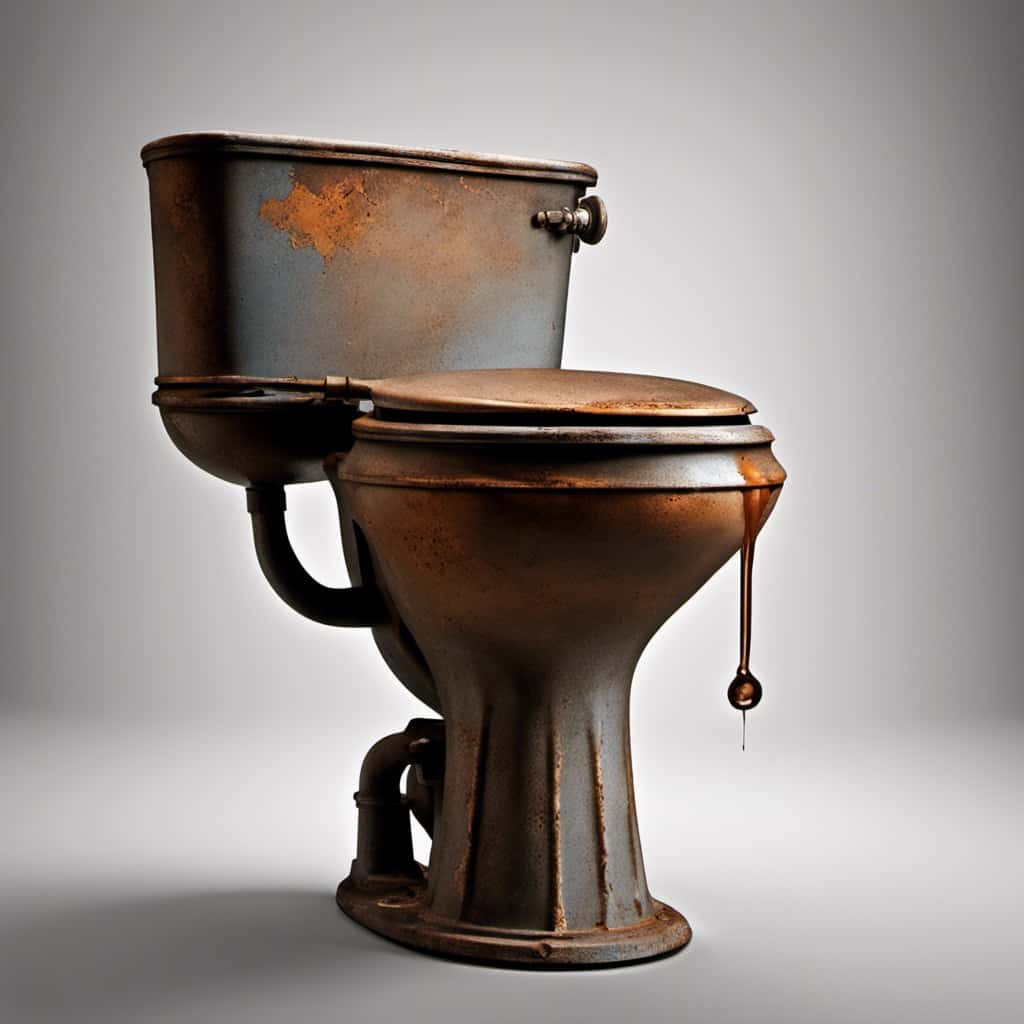
Recommended Water Levels for Different Toilet Models
Our recommended water levels for different toilet models depend on their specific design and functionality. The toilet water capacity plays a crucial role in determining the optimal water level for a particular model.
Water saving technology has revolutionized toilet design, allowing for more efficient flushing while conserving water. Modern toilets are designed to operate with lower water levels, typically ranging from 1.28 to 1.6 gallons per flush (GPF). However, some high-efficiency toilets can flush effectively with as little as 0.8 GPF.
It’s important to follow the manufacturer’s guidelines when setting the water level to ensure proper flushing and avoid any potential issues.
Additionally, adjusting the water level in the toilet tank can help optimize performance and water usage, contributing to a more sustainable and cost-effective solution.
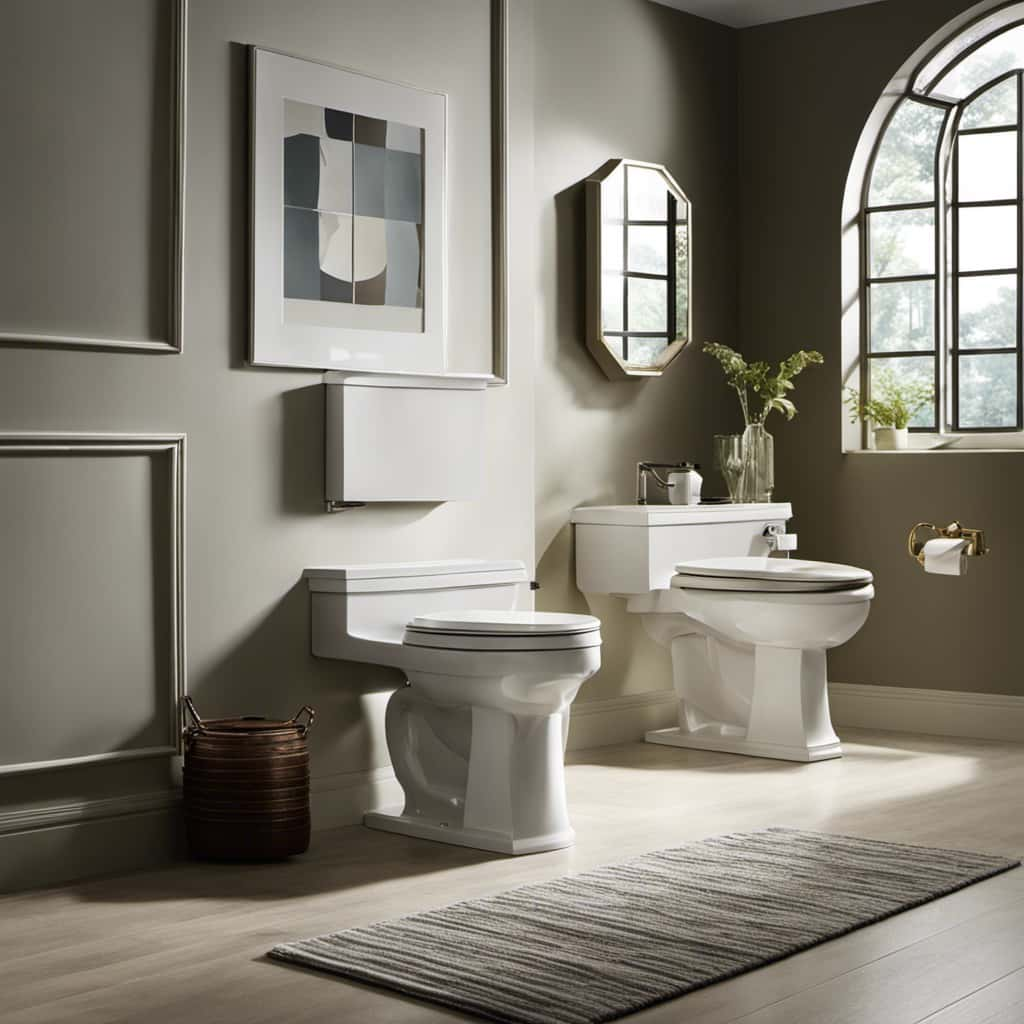
Tips to Reduce Water Consumption Without Sacrificing Performance
In order to reduce water consumption without sacrificing performance, we can implement various strategies.
By incorporating water saving innovations and adopting sustainable bathroom practices, we can significantly reduce our overall water usage while still ensuring efficient flushing.
One strategy is to install dual flush toilets, which offer two flushing options – a lower volume flush for liquid waste and a higher volume flush for solid waste. This allows us to use only the necessary amount of water for each type of waste.
Another strategy is to retrofit existing toilets with water-saving devices such as adjustable flappers or flush valves, which can reduce the amount of water used per flush.

Additionally, practicing good toilet habits, such as not using the toilet as a garbage disposal, can also help reduce water consumption.
The Future of Water-Saving Toilets
The future of water-saving toilets includes advancements in technology and increased efficiency in water usage. As the impact of water scarcity becomes more pronounced, the need for innovative solutions to conserve water becomes crucial.
Water saving technology in toilets is continuously evolving to address this need. One such advancement is the use of dual-flush toilets, which allow users to choose between a low-volume flush for liquid waste and a higher-volume flush for solid waste. This not only reduces water consumption but also ensures optimal performance.
Additionally, there are now toilets equipped with sensors and smart systems that automatically adjust water flow based on usage, further maximizing efficiency.
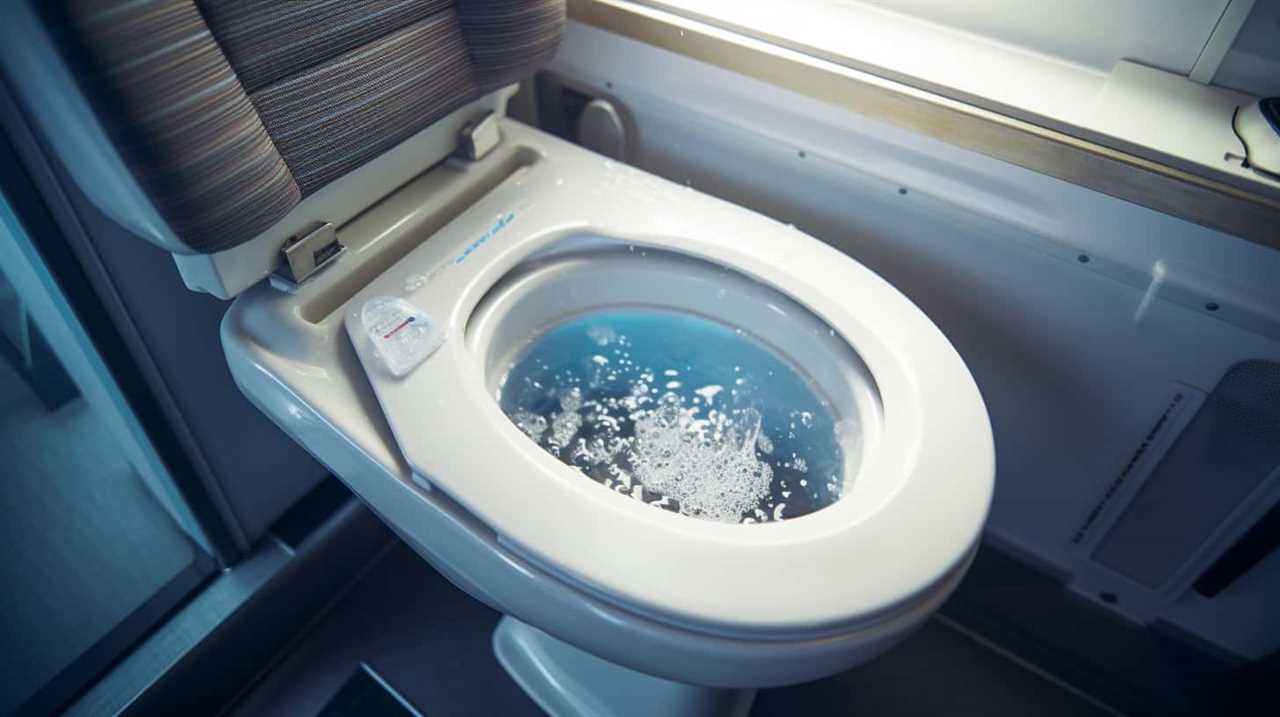
These advancements in water-saving technology hold great promise for the future, as they enable us to conserve water without sacrificing functionality.
Frequently Asked Questions
How Does the Water Efficiency of Toilets Impact Water Consumption in Households?
Water efficiency of toilets greatly impacts water consumption in households. Implementing water saving strategies, such as using low-flow toilets, can significantly decrease water usage and subsequently reduce water bills.
What Are Some Common Factors That Can Affect the Efficiency of a Toilet Flush?
Factors affecting toilet flush efficiency can include the design of the toilet, the amount of water used, and any blockages in the pipes. To optimize efficiency, consider using low-flow toilets and avoiding flushing non-biodegradable items.
Are There Any Recommended Water Levels for Toilets That Are Specifically Designed for People With Disabilities?
Recommended water levels for toilets designed for people with disabilities vary depending on the specific toilet model and accessibility requirements. It is important to consult the manufacturer’s guidelines or a professional plumber to ensure proper functionality and user comfort.
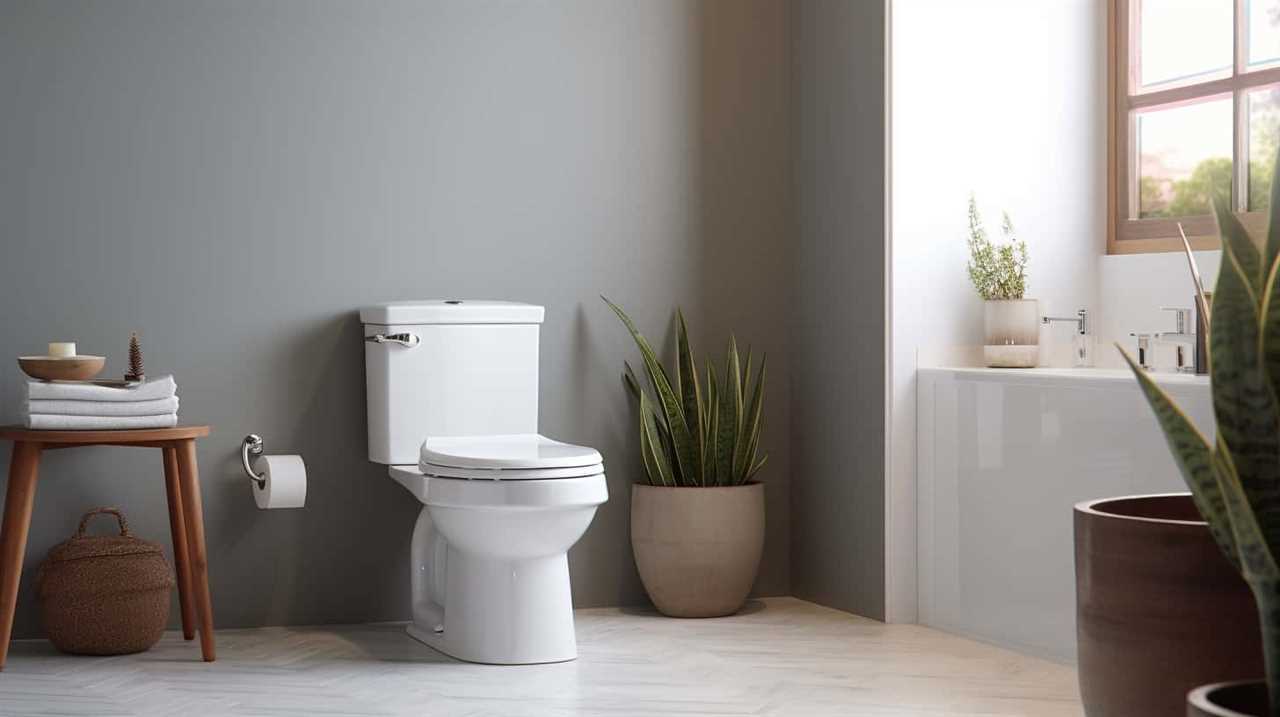
What Are Some Practical Tips That Can Help Reduce Water Consumption in Toilets Without Compromising Their Performance?
Toilet water saving techniques can significantly reduce water consumption without compromising performance. Efficient toilet flushing tips include adjusting the fill valve, using a dual-flush system, and installing a water-saving toilet. These methods ensure optimal water usage.
Are There Any New Technologies or Innovations in the Pipeline That Can Further Improve Water-Saving Features in Toilets?
Smart toilets and future toilet designs are incorporating new technologies and innovations to further improve water-saving features. These advancements aim to enhance efficiency and reduce water consumption without compromising performance.
Conclusion
In conclusion, finding the optimal water level for toilet flushing is crucial for water efficiency and environmental sustainability.
By understanding the factors that affect flush efficiency and following recommended water levels for different toilet models, we can reduce water consumption without compromising performance.
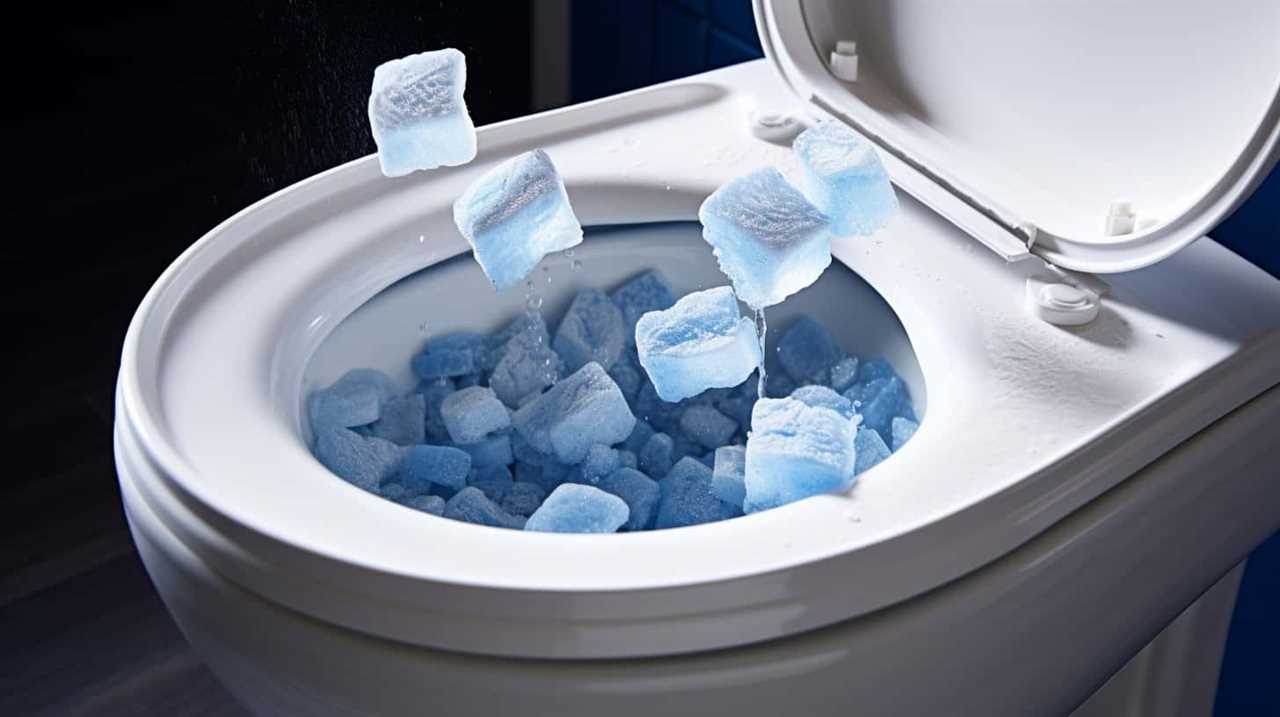
As we move towards the future, the development of water-saving toilets will play a significant role in conserving this precious resource.
Let’s strive to flush away wastefulness and embrace the gentle flow of conservation.
